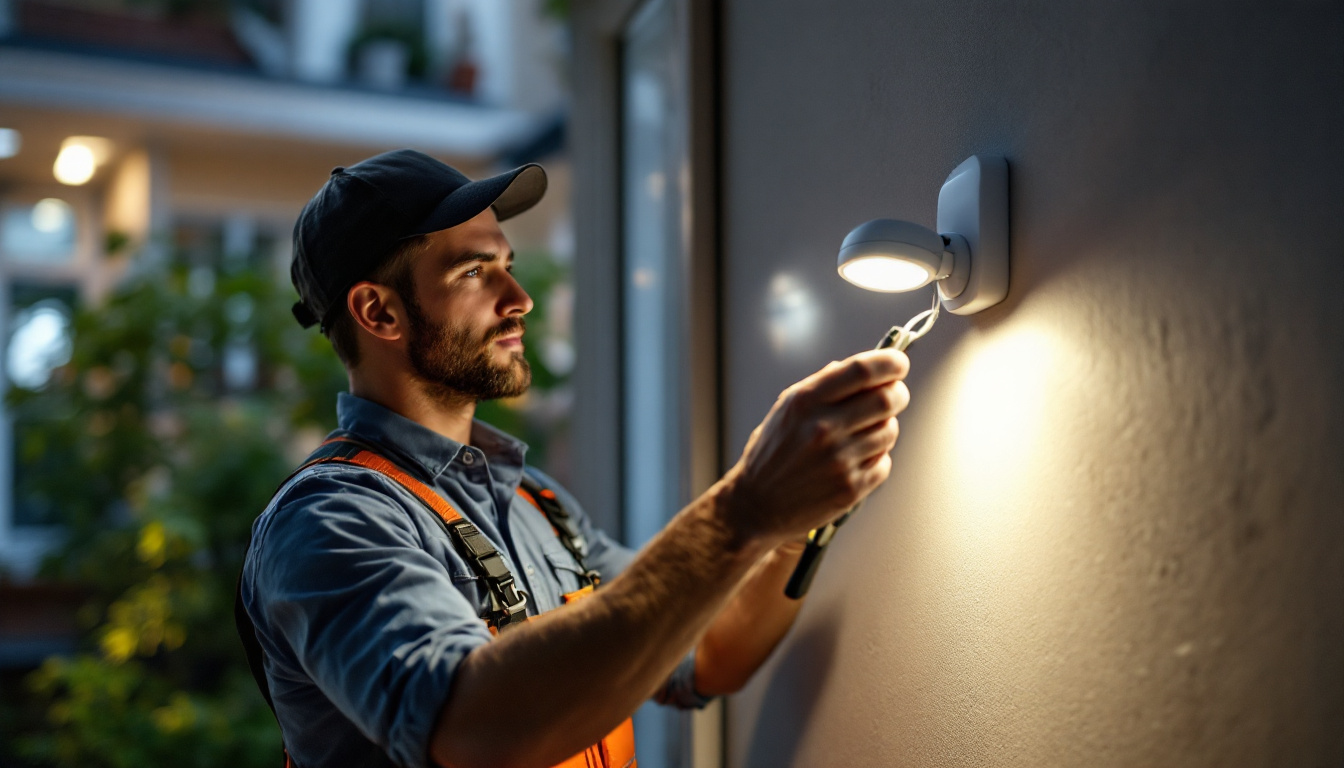

In the world of lighting, the 120V60W light bulb remains a staple for many contractors. Its versatility and efficiency make it a go-to choice for various applications, from residential to commercial settings. However, to maximize the benefits of these bulbs, lighting contractors must equip themselves with the right tools and knowledge. This article explores essential tools that every lighting contractor should have in their arsenal, focusing on how they can enhance the installation and maintenance of 120V60W light bulbs.
The 120V60W light bulb is a commonly used incandescent bulb that operates on a standard voltage of 120 volts, delivering a warm light output of 60 watts. This type of bulb is favored for its ability to provide a comfortable ambiance in homes and businesses alike. Understanding its specifications and applications is crucial for lighting contractors.
Lighting contractors often find the 120V60W bulb suitable for various environments. In residential settings, it is frequently used in table lamps, ceiling fixtures, and wall sconces. Its warm light creates an inviting atmosphere, making it ideal for living rooms and bedrooms. Additionally, this bulb can be found in outdoor fixtures, providing a cozy glow for patios and porches, enhancing the outdoor experience during evening gatherings.
In commercial spaces, these bulbs can be used in retail displays or office lighting, where a softer light is preferred to reduce glare. The 120V60W bulb is also popular in restaurants, where it contributes to a relaxed dining atmosphere. Understanding where and how to use these bulbs effectively can significantly impact the quality of lighting solutions provided to clients. Moreover, the versatility of this bulb allows for easy integration into various lighting designs, making it a staple in both traditional and contemporary settings.
While the 120V60W incandescent bulb has been a reliable choice, energy efficiency is becoming increasingly important. Many contractors are now exploring alternatives such as LED and CFL bulbs, which offer similar light output with significantly lower energy consumption. Understanding the pros and cons of these alternatives is essential for contractors looking to provide the best solutions for their clients.
For instance, LED bulbs can provide the same brightness as a 60W incandescent bulb while using only about 10 watts of energy. This not only reduces electricity bills but also extends the lifespan of the bulb, making it a more sustainable option. Additionally, LED technology has advanced to include a variety of color temperatures, allowing contractors to customize the lighting experience to suit specific needs, from bright white light for task-oriented spaces to warmer tones for relaxation areas. Contractors should stay informed about these advancements to meet the demands of eco-conscious clients. Furthermore, as energy regulations evolve, being knowledgeable about the latest lighting technologies will position contractors as leaders in the industry, capable of guiding clients toward more efficient and innovative lighting solutions.
Proper installation of the 120V60W light bulb requires specific tools that ensure safety and efficiency. Lighting contractors should be equipped with a variety of tools to handle different installation scenarios.
Every lighting contractor should have a set of basic hand tools, including screwdrivers, pliers, and wire cutters. These tools are essential for removing old fixtures and installing new ones. A good quality screwdriver set is particularly important, as different fixtures may require various types of screws.
Pliers are also invaluable for bending and twisting wires, ensuring secure connections. Wire cutters are necessary for trimming wires to the appropriate length, making the installation process smoother and more efficient. Additionally, having a wire stripper can be beneficial, as it allows for the precise removal of insulation from wires without damaging the conductor, which is crucial for achieving optimal electrical conductivity and safety.
Safety is paramount when working with electrical installations. A voltage tester allows contractors to confirm that power is off before beginning any work. This tool is crucial for preventing electrical shocks and ensuring a safe working environment.
A multimeter is another essential tool that can measure voltage, current, and resistance. This tool helps contractors diagnose electrical issues and verify that installations are functioning correctly. Having these tools on hand can significantly reduce the risk of accidents and improve the overall quality of work. Furthermore, understanding how to use a multimeter effectively can empower contractors to troubleshoot a variety of electrical problems, from identifying faulty wiring to ensuring that circuits are properly grounded, thereby enhancing their skill set and efficiency on the job.
In addition to hand tools, safety gear is an integral part of any lighting contractor’s toolkit. Personal protective equipment (PPE) such as safety goggles, gloves, and hard hats can protect against potential hazards during installation. Safety goggles shield the eyes from debris and bright lights, while gloves provide grip and protect the hands from cuts and electrical shocks. Hard hats are particularly important in environments where overhead work is required, ensuring that contractors are safeguarded from falling objects.
Moreover, having a first aid kit readily available on-site is a wise precaution. Accidents can happen, and being prepared with basic medical supplies can make a significant difference in addressing minor injuries promptly. This proactive approach not only enhances safety but also fosters a culture of responsibility and care within the contracting team, ensuring that everyone can work confidently and efficiently.
Once the 120V60W light bulbs are installed, regular maintenance is necessary to ensure they operate efficiently and last as long as possible. Lighting contractors should be prepared with the right maintenance tools.
Dust and grime can accumulate on light fixtures, affecting the quality of light emitted. Contractors should have microfiber cloths and appropriate cleaning solutions to keep fixtures clean. Regular cleaning not only enhances the appearance of the fixtures but also maximizes light output.
Additionally, using a ladder or step stool may be necessary for reaching high fixtures. Ensuring that these tools are available can make maintenance tasks easier and safer.
Having a stock of replacement parts and accessories can save time during maintenance visits. This may include extra sockets, wiring, and even spare bulbs. Being prepared with these items allows contractors to address issues promptly without needing to make additional trips to suppliers.
Furthermore, understanding the compatibility of different fixtures with the 120V60W bulb can help contractors provide better service. Knowledge of available accessories, such as dimmer switches or smart lighting controls, can also enhance the overall lighting experience for clients.
Even with the best installation practices, issues can arise with lighting systems. Lighting contractors should be equipped with tools that allow them to troubleshoot and resolve problems efficiently.
Wire strippers are essential for preparing wires for connections. They allow contractors to remove the insulation without damaging the wire itself, ensuring a reliable electrical connection. Crimping tools are also important for securing connectors to wires, providing a solid and lasting connection.
These tools are particularly useful when dealing with older wiring systems that may require repairs or upgrades. Being adept at using these tools can enhance a contractor’s ability to solve problems on-site quickly.
A light meter is a valuable tool for measuring the intensity of light emitted by bulbs. This can help contractors assess whether the installed lighting meets the desired specifications. By measuring light levels, contractors can make informed decisions about adjustments or replacements needed to achieve optimal lighting conditions.
Using a light meter can also aid in educating clients about their lighting choices, helping them understand the benefits of different bulb types and configurations.
The lighting industry is continuously evolving, with new technologies and trends emerging regularly. For lighting contractors, staying informed about these changes is vital for maintaining a competitive edge.
Investing in continuing education and training can provide contractors with the knowledge needed to stay ahead. Workshops, online courses, and industry conferences offer opportunities to learn about the latest advancements in lighting technology, including energy-efficient options and smart lighting systems.
By staying updated, contractors can offer clients the most current and effective lighting solutions, enhancing their reputation and increasing customer satisfaction.
Building a network with other lighting professionals can be beneficial for sharing knowledge and resources. Joining industry associations or local contractor groups can provide valuable insights into best practices and emerging trends.
Networking can also lead to collaborative opportunities, where contractors can share projects and expertise, ultimately benefiting their businesses and clients.
The 120V60W light bulb remains an essential component in the lighting contractor’s toolkit. However, to maximize its potential, contractors must be equipped with the right tools and knowledge. From installation to maintenance and troubleshooting, having the appropriate tools can enhance efficiency and improve the quality of work.
By staying informed about industry trends and investing in continuing education, lighting contractors can ensure they provide the best solutions for their clients. In a rapidly changing industry, adaptability and knowledge are key to success.
Ultimately, the right tools and a commitment to excellence will empower lighting contractors to deliver outstanding results, ensuring that their clients enjoy the benefits of effective and efficient lighting solutions.
Ready to enhance your lighting projects with the best tools and bulbs in the industry? Look no further than LumenWholesale for all your lighting needs. We provide contractors with high-quality, specification-grade lighting products at unbeatable wholesale prices. Our extensive selection is designed to meet the highest industry standards, ensuring every 120V60W light bulb and accessory you purchase is reliable and efficient. Plus, with free shipping on bulk orders, you can stock up on premium lighting without worrying about hidden fees or inflated costs. Elevate your lighting solutions today and experience the perfect blend of quality, affordability, and convenience. Visit LumenWholesale now for Wholesale Lighting at the Best Value.

Discover the essential insights every lighting contractor needs to know about pendent lights.

Discover the essential checklist for lighting contractors focusing on sensor automatic lights.

Discover expert tips and insights on selecting and installing LED factory lights tailored for lighting contractors.

Discover essential tips and strategies for lighting contractors to prevent common pitfalls when installing LED linear high bay systems.
Get notified when NEW deals are released.
Optimize your budget with wholesale discounts.
Only top-quality, specification-grade lighting products.
No additional costs at checkout - what you see is what you pay.
We understand the unique needs of contractors.